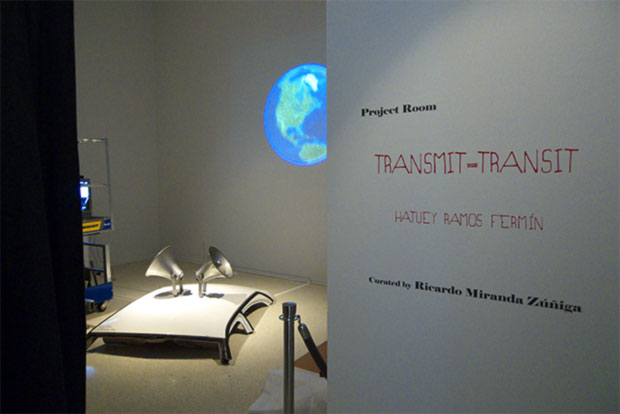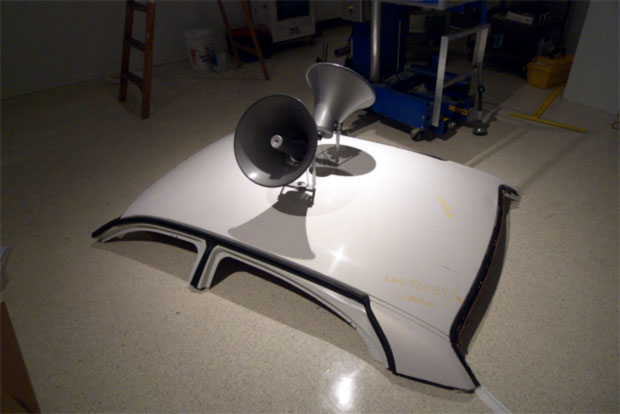Midland Credit: Abusive and Irresponsible
Several weeks ago, I received a collection letter for about $900 from Midland Credit for a debt that Midland purchased from Bank of America. I was surprised because I have no debts and I’ve never had any account or anything to do with Bank of America.
So I call Midland Credit, they ask me the last four digits of my social security number and the guy tells me that the debt is owed by another Ricardo Miranda with a different social security number and born in 1964. He goes on to tell me that my name and address will be deleted and that the credit bureaus will be contacted with the correction. I ask how such a mistake can be made, after all this is someone’s credit that they are playing with, and he tells me that they just look for people living in the same area as the person who incurred the debt was living and has the same name and then pin the debt to that person and send a collection letter. I was amazed at how irresponsible their procedure at collection is, hell I could do that, get a name and address without paying for a social security number check and just send a collection letter. I can’t believe that this sort of company is allowed to function and to ruin a person’s credit.
A couple weeks later, I receive the same collection letter! I call again, and my name and address has not been erased and then I tell the guy that this can really screw up my credit and I’m trying to refinance a mortgage and he tells me that it can’t possibly effect my credit score as the debt is not associated with my social security number.
A month later, I’m trying to refinance my mortgage and am told that two of my credit reports are a 100 points below what they should be, due to a Midland Credit debt! Now I’m wasting a lot of time, trying to correct information for a debt that is owed by some other guy with my name… This is nuts!
OK GO versus Fischli and Weiss
I’m listening to an interview on NPR with the band OK GO talking about their new video featuring their “original” Rube Goldberg Machine. So I check out the video and see that it’s basically a rip off of “The Way Things Go” (1987) by Peter Fischli and David Weiss. Generally, I don’t use the term “rip off” and consider culture and ideas to be up for grabs, but when I hear the guy being interviewed say that to his knowledge there’s never been a Rube Goldberg Machine of the scale that they built, it just pisses me off.
|
Fischli Weiss – The Way Things Go, 1987 |
OK Go – This Too Shall Pass, 2010 |
Pop is cool, but it’s important to acknowledge precedents, particularly when they are more conceptually compelling. Fischli and Weiss primarily used house hold chemicals as the agents of force, to reflect on the strength and potential harm of these chemicals. The chemical reactions work with recycled goods to create the kinetic sculpture in time. “The Way Things Go” is an art classic, and it’s hard to believe that an arty pop band doesn’t know about the piece, particularly when the staging is so much of a replica. Also Fischli and Weiss’s version is much longer, about 15 minutes, more complex and didn’t cost $150K or use a team of engineers. It’s cool how the OK Go version is precisely timed with the music and they put themselves in it, but acknowledge where ideas come from! Judge for yourself (unfortunately, “The Way Things Go” is so long that only small portions are available).
Home Taping Is Killing Music
I recently received a Cablevision courtesy letter letting me know that illegal download activity had been tracked via my account! Must have been a neighbor. Wont those pirating evil-doers ever learn, content isn’t free! Here’s a great video from Dan Bull, reminiscing on the days when copyright infringement revolved around mix tapes. Little did they envision what the digital age would mean to distribution.
Review and Interview with Hatuey Ramos Fermin
Puerto Rican publication, Dialogo Digital ran a review and interview of “Transmit-Transit” Hatuey Ramos Fermin’s first solo show in NYC that I curated. The article presents an in depth interview with Hatuey regarding the development and concepts behind the exhibition currently on exhibit at the Longwood Art Gallery at Hostos in the Bronx.
TRANSMIT – TRANSIT March 3rd – May 5th

Hatuey Ramos Fermin at Longwood Art Gallery
Hatuey Ramos Fermín’s first solo exhibition in NYC opens tomorrow night at the Longwood Art Gallery at Hostos! Last fall, Dominican / Puerto Rican artist Hatuey asked me to work with him and to help him realize his first solo show as its curator. I listened to his concept – an exhibition that investigates the livery cab drivers in the Bronx and was intrigued and agreed to help however I could. The conversation got started, we shared ideas, he presented to me portions of his interviews with drivers, I gave the best feedback possible and tried to lend some direction in how to translate the video interviews into a gallery installation and Hatuey executed!
The show looks great and presents an intriguing insight into the little considered labor of the livery cab drivers. I also wrote an essay and designed a small catalog in the form of a full spread newspaper sheet, English on one side, Spanish on the other and featuring a map created by Michael E Jimenez for the exhibition.
The day before the opening, Hatuey and I did a walk through and here are a couple photos taken.

TRANSMIT - TRANSIT car top with loud speakers amplifying live taxi dispatch
And below is an excerpt from the essay that I wrote for the exhibition:
“Attending to the local, by taking the local seriously” this is the mission of TRANSMIT – TRANSIT. Ramos Fermín has engaged in deconstructing an element of local space to investigate just one detail of modernity and globalization. He has not done so as a traditional artist, walking the streets of the Bronx, getting lost in the vernacular of the city to generate creative musings that reflect one person’s vision. Instead he has worked as an investigative journalist or documentary filmmaker. Ramos Fermín has logged several hours of video interviews with livery cab drivers, he has visited several dispatch offices, diners, gas stations, car repair shops… the local spaces of the drivers. Over the last several months, he has engaged with the livery cab community to learn of its reality, document it and create an engaging portrayal that is both attentive and serious. The final outcome of his investigation is a rich installation that attempts to capture the hardship and diversity of the trade. And the encompassing device of the installation is the live radio feed from cab livery dispatches surrounding the gallery.
By incorporating the live radio dispatch, Ramos Fermín transforms the gallery visitor from art viewer to voyeur, listening in on the orders being transmitted all around us. Radio transmissions that direct one human being to drive a vehicle to a specific site, pick up a passenger, and drive to a new destination. It happens at all hours of each day; it is a common reality of the urban space and absolutely nothing exceptional. And yet it is fascinating to take a moment, listen and consider the wide implications of these transmissions. By having us listen, Ramos Fermín effectively dislocates our consciousness into a private space – that radio spaces employed between dispatch and drivers – transmissions that we are only privy to when in a cab and even then hardly take note of. But when these transmissions are re-contextualized within the gallery walls, when we are invited to listen, not as passengers eager to arrive at our destination, but rather as art viewers expecting to engage with creative work, the transmissions gain new depths. The gallery becomes a portal to an alternate real-time reality – we listen to what others are doing and experiencing at that same moment, but elsewhere, not far, but beyond the gallery’s walls.
New Media Position at CUNY Hunter
ASSOCIATE OR FULL PROFESSOR FILM AND MEDIA STUDIES
JOB ID: 2389
Hunter College’s Department of Film and Media Studies, which combines analytical and theoretical analysis with creative practice using an interdisciplinary approach to media, seeks applications for an Associate Professor or Professor who is a scholar and practitioner of new media. The position calls for a candidate who has an understanding of the cultural effects of new media and Internet technologies. Extensive teaching experience is essential. A PhD or MFA is required. APPLY ON LINE TO THE FOLLOWING EMAIL ADDRESS: digitalmediasearch@hunter.cuny.edu
Include letter of application with teaching/artistic/professional philosophy, curriculum vitae, list of three references or send to:
Dr. James Roman, Professor & Chair
Department of Film and Media Studies
Hunter College, CUNY
695 Park Avenue
New York, NY 10065
Post-Studio Artists
Jennifer DePriest and Charisse Williams two graduate students at Columbia’s Journalism program recently produced a nice little piece on Post-Studio art practices that features Douglas Paulson, Christopher Robbins and myself. The piece revolves around the necessity or desire for artists living in New York City to find alternative modes of art making, beyond the traditional studio. View the video on Vimeo
U.S. Elections: It’s All For Sale!
In July I wrote an entry on corporate citizens contributing to U.S. elections, Corporations Aren’t Citizens concerning the Citizens United vs. Federal Election Committee case that the Supreme Court began deliberating on on Sept. 9th… Well, it’s a done deal. The conservatives on the Supreme Court bench have ruled to corrupt democracy (even further that it generally is) by allowing the free flood of corporate spending in political campaign. This wouldn’t be so troubling if the United States had a politically informed and active population. Unfortunately the vast majority of this country’s population is easily swayed by media influence and hollow ideologues. The majority of this population does not thoroughly inform themselves or try to uncover nuances or consider challenging concepts… So those with the most money, the so called corporate citizenry will decide the vote of the general citizenry through the purchase of television, radio, web and publication ads.
One of the dissenters on the Supreme Court bench, the ever-thoughtful Justice John Paul Stevens “read a long dissent from the bench. He said the majority had committed a grave error in treating corporate speech the same as that of human beings. His decision was joined by the other three members of the court’s liberal wing.” The change that Obama seeks to bring just seems to be undermined as his presidential tenure proceeds. Read the full article from the NY Times – Justices Overturn Key Campaign Limits.
Melanie Joseph Quote
from NY Times article “City as Stage, Audience as Family”:
“I don’t believe theater can change the world. People can — through rigorously created art that can reveal to those watching what their politics are and through an interrogation of ideas that massages empathy, the place where all great politics comes from.”
Melanie Joseph
Earthquake In Poverty
The Port-au-Prince earthquake brings to mind the 1972 Managua earthquake and in wondering about the future of Haiti, I can’t help to question if old parallels between Haiti and Nicaragua will continue or if the 21st century presents a better future. I bring up a 40 year old earthquake, because there are so many historical parallels between Haiti and Nicaragua:
both were once Banana Republics of the United States.
both were once ruled by dictatorial dynasties supported by the U.S.: Somoza Dynasty (1936-1979) <=> Duvalier family (1957-1986). It’s uncertain to whom Roosevelt was referring to when he said “He may be a son of a bitch, but he’s our son of a bitch…” whether it was Anastasio Somoza or Trujillo of the Dominican Republic, but it could have been made by later presidents about Papa Doc or Baby Doc.
Today both countries remain amongst the poorest of the Americas and both countries are susceptible to natural disasters.
In the late 1960s or very early 70s, Howard Hughes was in talks with Somoza to establish Nicaragua as a tourist destination due to its natural beauty. Had these plans come to fruition, Nicaragua today could be much like Costa Rica, but in 1972 the capital of Nicaragua, Managua was struck by a 6.5 earthquake which destroyed nearly 90% of the city and Hughes soon left the country along with his plans.
International aid arrived and Somoza became even wealthier. Rather than using the relief money to rebuild Managua, create jobs and homes for the poor, Somoza stole foreign aid and stifled industry. Today the ruins of old Managua remain in place with poor people living in them, the new Managua has been built around the ruins with little organization or long term planning. Shanty towns can be found adjacent to the old downtown and there are many sections that do not have running water or formal electricity. Nicaragua, where the streets have no name, remains amongst the poorest countries of the Americas, usually second to Haiti. The history of course is a lot more complex than the 1972 quake, none the less, the earthquake and its scars are very much present.
It’s 2010, a corrupt dictator does not rule over Haiti, however in an impoverished nation with weak civic infrastructure it’s not difficult to envision the future Port-au-Prince in today’s Managua.
